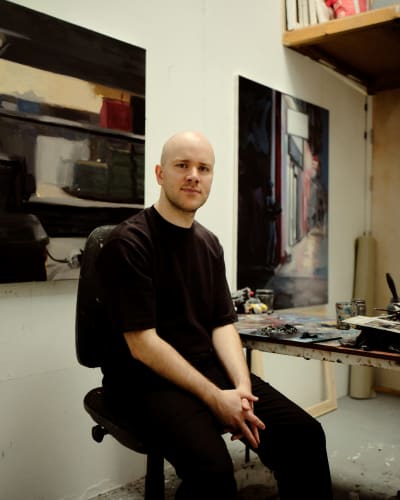I paint everyday scenes based mostly on candid photographs I take of people and places in the city. My aim is to present the understated, fleeting moments in urban life - often that which is overlooked due to its over-familiarity.
I have always been interested in vernacular photography. The moments captured in these images resonate with me, with their suggestion of untold stories and unexpected compositions. Found analogue photographs, with their other-worldly colours and softening of details, seem to contain an unintended pathos that resonate with me.
Film is another important influence for me in terms of elevating this subject matter and using visual elements to help tell a story. I am especially interested in pictorial devices, and how these can be used to create a psychological landscape as in the work of directors such as Andrei Tarkovsky and Wong Kar-wai. By making use of such filmic qualities in my work, a narrative is suggested, one that is left open for the viewer to interpret. In addition to film and photography, the tactility of oil paint has always appealed to me. Oil paint, in the quality of its application, lends itself well to a shorthand expression of detail which helps create ambiguity, inviting the viewer in to the painting.
My paintings often depict liminal, transitional spaces or non-places in cities. Anthropologist Marc Augé defines ‘non-places’ as not relational, historical, or concerned with identity. These spaces have the effect of anonymising and grouping those who inhabit them. We become customers, commuters, workers et cetera.
The everyday is the main theme of my work, with a focus on urban life and the tension between togetherness and isolation within these environments. Within this, my paintings gesture towards the ongoing conveyer belt of consumerism: mannequins, supermarket shelves, vending machines, fast food outlets and delivery drivers. I see these as signifiers for the disposable, fast-paced, detached lives we live today.
